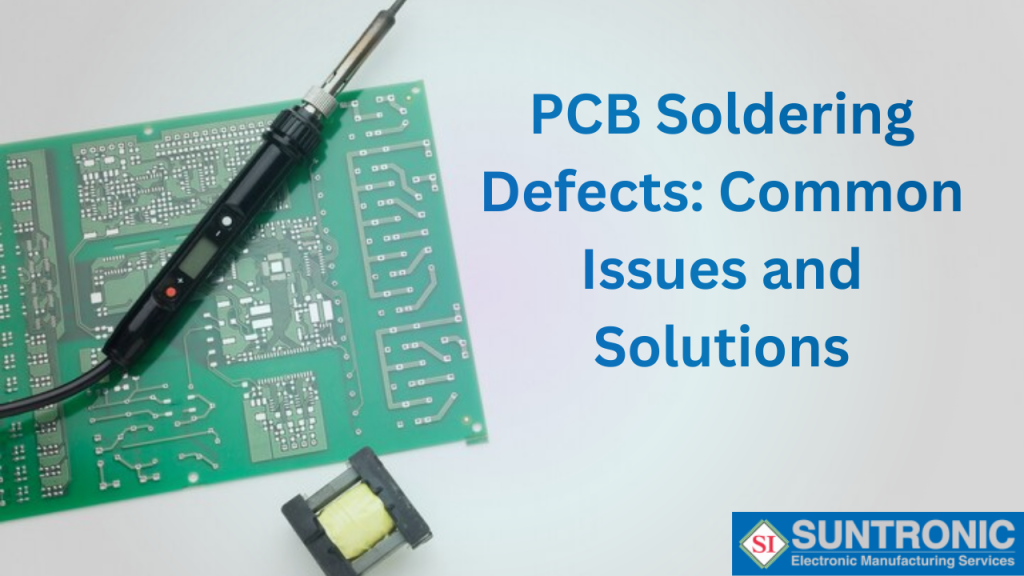Soldering is a foundational process in the printed circuit boards assembly. It involves creating electrical connections betweens electronic components and the PCB substrate using solder, a metal alloy with a low melting point. These connections are essential for the functionality of electronic devices, as they enable the transfer of electrical signals and power between components.
Common soldering defects and their impact on PCB functionality

While soldering is a crucial step in PCB assembly, it is not without its challenges. Various defects can occur during the soldering process, affecting the quality and reliability of the final product. These defects can range from minor issues like poor solder joints to more significant problems like solder bridges and solder balls. Understanding these defects and their causes is essential for ensuring the quality of PCB assemblies.
Understanding PCB Soldering Defects
Soldering defects refer to imperfections in the solder joints between electronic components and the PCB substrate. These defects can arise due to a variety of factors, including improper soldering techniques, inadequate flux application, and environmental conditions such as temperature and humidity.
Identifying and addressing soldering defects early in the manufacturing process is critical for several reasons. First and foremost, it helps prevent the defects from propagating throughout the assembly process, reducing the need for costly rework and minimizing the risk of product failures. Additionally, early detection allows manufacturers to implement corrective measures to improve soldering processes and prevent future defects.
Types of PCB Soldering Defects
Bridging: Bridging occurs when excess solder flows between adjacent conductive elements, such as component leads or PCB pads, creating an unintended electrical connection. This defect can occur due to factors such as excessive solder paste application, improper stencil design, or inadequate soldering technique.
Cold Joints: Cold joints are solder joints that fail to properly wet the surfaces being joined, resulting in a weak or incomplete bond. This defect can occur when the soldering iron temperature is too low, the soldering time is insufficient, or the surfaces being joined are contaminated or oxidized.
Solder Balls: Solder balls are small spherical masses of solder that can form on the surface of the PCB during the reflow soldering process. These balls are typically formed when excess solder paste is squeezed out from under the components during reflow, forming droplets that solidify on the PCB surface.
Solutions to PCB Soldering Defects
Some common strategies for preventing and addressing soldering defects include:
Quality Control Measures
- Implementing thorough quality control processes, such as visual inspection, automated optical inspection, and X-ray imaging, to detect and identify soldering defects early in the Rapid Prototyping PCB Assembly phase and during electronic testing.
- Developing standardized procedures and protocols for soldering operations to ensure consistency and repeatability.
Process Optimization
- Continuously monitoring and evaluating soldering processes to identify areas for improvement and optimization throughout Rapid Prototyping PCB Assembly and electronic testing.
- Implementing corrective actions and process adjustments to address root causes of soldering defects and improve overall process performance.
Conclusion
Soldering defects are common challenges in PCB assembly that can have significant implications for product quality and reliability. By understanding the causes and characteristics of common soldering defects and implementing effective preventive measures, manufacturers can minimize the risk of defects and ensure the quality and reliability of their PCB assemblies.
Related Blogs:
- Exploring the Benefits of V-Scoring for PCB Assembly
- Understanding the Causes and Solutions for Printed Circuit Board Fires
- Understanding the Burn-in Test Process in PCB Manufacturing
- Understanding the Causes of PCB Design Assembly Failure
Tiandy Technologies CO.,LTD , https://en.tiandy.com